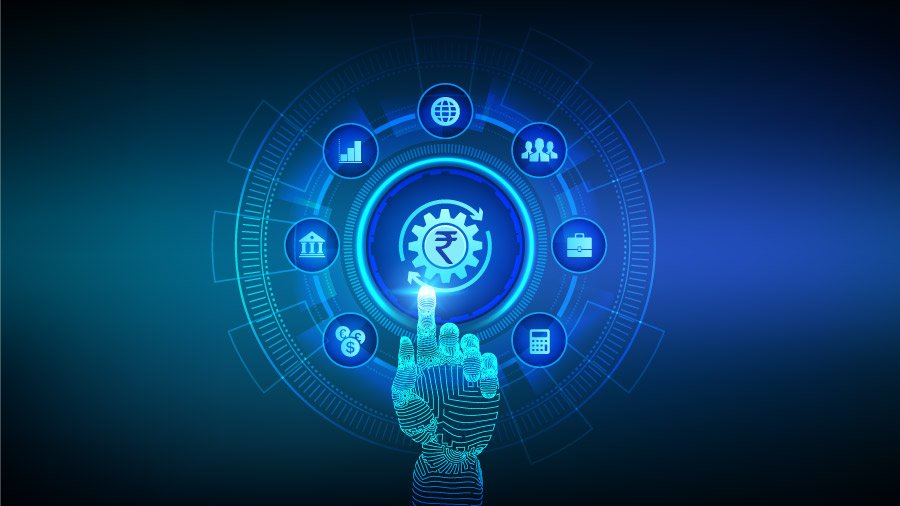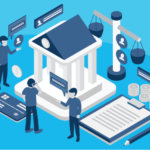How ULI will Transform Lending Software Solutions – The Unified Lending Interface (ULI), a novel project in the Indian financial scene, was established by the Reserve Bank Innovation Hub (RBIH). This digital public infrastructure (DPI) platform will fully transform the payments ecosystem and the lending industry. Because of its innovative and creative design, strong functionality, and seamless integration of many data sources, ULI stands out as an important player in meeting the credit demands of no-file or thin-file borrowers. This sets it apart from present lending platforms.

ULI: What is it?
A modern online tool called the Unified Lending Interface (ULI) looks to make loan applications effortless and more available to everyone. ULI, made by the Reserve Bank’s Innovation Hub (RBIH), makes it possible for digital information to be transferred simply and with continuity. ULI was created expressly to simplify the hard loan process. The information that is important for loan approval is entrusted to many companies, dispersed among credit bureaus, banks, and government databases.
The loan approval process may be considerably slowed down by this transformation. By integrating information from many sources into a smooth system of channels, ULI solves this issue and allows lenders to evaluate credit applications more quickly and successfully. The outcomes? Costs and paperwork are significantly reduced, and approval times are halved.
How ULI Will Change the Lending Industry
Streamlined Credit Underwriting
With the borrower’s approval, ULI enables lenders to access their pre-digitized financial and non-financial data from many sources. This notably reduces the amount of time and complexity needed for credit evaluation, specifically for companies that provide lending software.
More Quick Loan Disbursement
ULI can help speed up the lending process by automating the loan approval process, giving customers faster access to financing.
Greater Access to Finance
A greater variety of borrowers, including those in rustic areas who might have lastly found it hard to get formal credit because of a lack of documentation, can now be served by lenders because to enhanced access to credit information.
Making Decisions Based on Data
Lenders can have a complete picture of the borrower’s risk and financial status thanks to ULI. This reduces credit risk, allows prudent lending decisions, and leads to loan repayment.
Lowered Prices
ULI can reduce lenders’ operating costs and enable them to offer more competitive lending rates by lowering credit risk.
Increased Openness
By enabling even the borrower to view the status of their loan application in real time, the unified platform promotes clarity.
How It Works
Finacle eBanking is currently among the most sophisticated online banking options accessible, giving nearly all possible features, including –
Integration of APIs – ULI’s single API makes it effortless for lenders to integrate with data providers by giving them access to borrower data.
Sharing of Data Based on Consent – The borrower must consent just before any data is forwarded to lenders.
Data Sources – To make an underwriting judgment, ULI can access a huge range of data sources, including credit agency reports, land records, rental history, bank statements, and other important information.
It is expected that ULI would change the lending environment in India by starting a clearer, effective, and inclusive credit system that benefits everyone, specifically the underprivileged groups.
Advantages of Faster Loan Approvals with ULI
Individuals who live in rural areas where lending has historically been delayed would benefit from ULI’s significant reduction in loan approval times.
Smooth Procedure – ULI smooths the loan application process by digitizing data and cutting down on paperwork, making it effortless and accessible for everyone.
Greater Credit Access – ULI will fill the credit gap that exists now, particularly for small companies and the farm industry.
Easing Openness – By demonstrating to customers how their information is utilized, the platform guarantees clarity and builds trust in the borrowing process.
ULI: The Upcoming Digital Revolution in India
Along with JAM (Jan Dhan, Aadhar, Mobile) and UPI, Indian central bank governor Shaktikanta Das has positioned ULI at the center of the country’s next notable advancement in digital infrastructure. Similar to how UPI changed digital payments, ULI aims to boost credit availability and make a more welcoming financial system.
ULI aims to offer financial services to everyone, from small firm owners in big cities to farmers in rural locations, not just to expedite loans. ULI can promote financial inclusion and economic growth across the nation by reducing credit difficulties.
FAQs
What is ULI, and how does it impact lending software?
A modern integration architecture called ULI (Universal Lending Interface) was created to standardize and clarify the communication between software platforms and lending institutions. By easing faster data interchange, simplifying integration, and improving compliance and reporting effectiveness, it transforms lending software.
How can ULI improve the experience of borrowers?
Loan processing and approval times are reduced by ULI’s ability to process data in real time and make more accurate decisions. Borrowers will have a more flawless and clear experience as a result of the reduction in manual errors and delays.
Will ULI help lenders in managing regulatory compliance?
Yes, by allowing more constant data reporting and audit trails, ULI is made to manage advanced regulatory settings. This reduces the possibility of non-compliance and makes platform-to-platform regulatory changes easier.
Is it possible to update the current lending software to accommodate ULI?
The majority of modern lending platforms can use middleware or APIs to interface with ULI. Even though some adaptation might be important, ULI is made to be adaptable and work with a lot of cloud-based and legacy systems.








